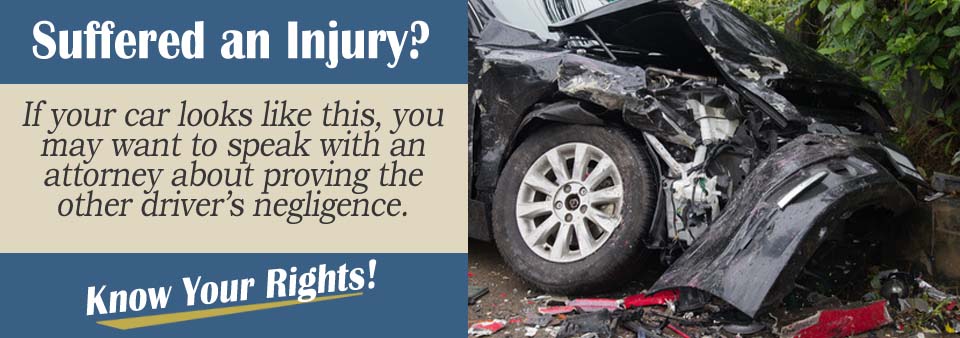Negligence is key when it comes to receiving compensation for your injuries in a car accident. If the other driver is determined to be at fault, that normally means he or she is deemed negligent. However, the law places specific requirements in determining negligence, and each element is important to prove your client. How do you prove these elements in showing that the other driver was negligent?
To get to the bottom of this, we reached out to attorney Alaina Sullivan. She gave us some pointers for establishing proof of negligence:
Establish a Duty of Care
Every driver holds a basic legal duty to operate his or her car in a non-negligent manner. Essentially this means that the driver must operate the car in a way that is not likely to be harmful to other drivers or property. Cars can be deadly weapons and should be driven with the utmost care. It is what has been hammered in our minds since driver’s ed.

Obey the traffic laws, do not drink and drive, obey the speed limits, use turn signals and do not drive recklessly. Laws are established for a reason: to keep us safe, and once you are given that piece of paper saying you can legally drive, you are expected to follow the rules, drive responsibly and take the duty of care placed on you very seriously.
Show that the Driver Breached the Duty of Care
Showing the duty of care exists is fairly easy. The important part is showing that the driver breached that duty while operating his or her vehicle. Did the driver operate the vehicle in a way that potentially could have caused harm to another person or property?
Keep in mind, that duty of care goes out to other drivers on the road, motorcyclists, bicyclists, pedestrians and others.
The breach of duty can be something relatively minor or could be something huge. Driving 30 miles per hour over the speed limit on a snowy day would obviously qualify for a serious breach of duty.
Connecting the Breach to the Cause
Once you have established that the driver did breach his or her duty of care when operating a motor vehicle, you will then need to show that the driver’s actions were the direct cause to your injury. Two different types of causes exist. When something is referred to as the “cause-in-fact” that means the breach of duty of care was the direct and actual cause of what happened.
This type of causation can be easy to prove as it is normally obviously when something directly led up to a certain result. When something is a proximate cause, however, this is known as a “but for” causation. for this breach of duty might have directly caused the damages, but had that breach not occurred, the damage would not have happened.
Proving Damages as a Result
You should have some type of an injury to seek compensation for the accident. Several different types exist out there that are called “damages.” They can mean physical harm to yourself or your property. They can also mean pain and suffering which are expenses that come because of your ability to not enjoy your quality of life as a direct result of the accident.
Whatever the damages are, however, they must be shown to come from the conduct that amounted to a breach of duty.
Speak With an Attorney Today
A licensed personal injury attorney will be able to evaluate your case and determine if you have a claim against the other party’s insurance company. For the best chance of receiving the compensation you need to pay for medical bills, auto body bills, and pain and suffering, you should speak with a personal injury attorney in your area today.